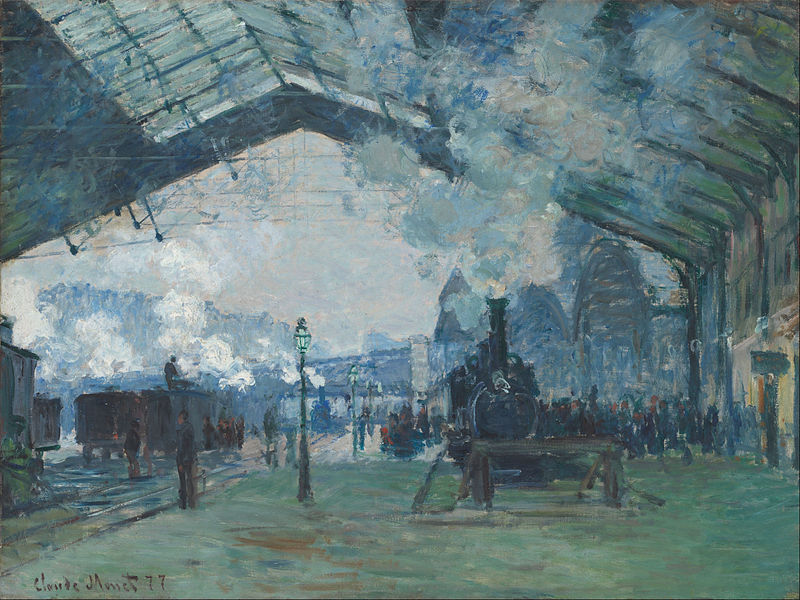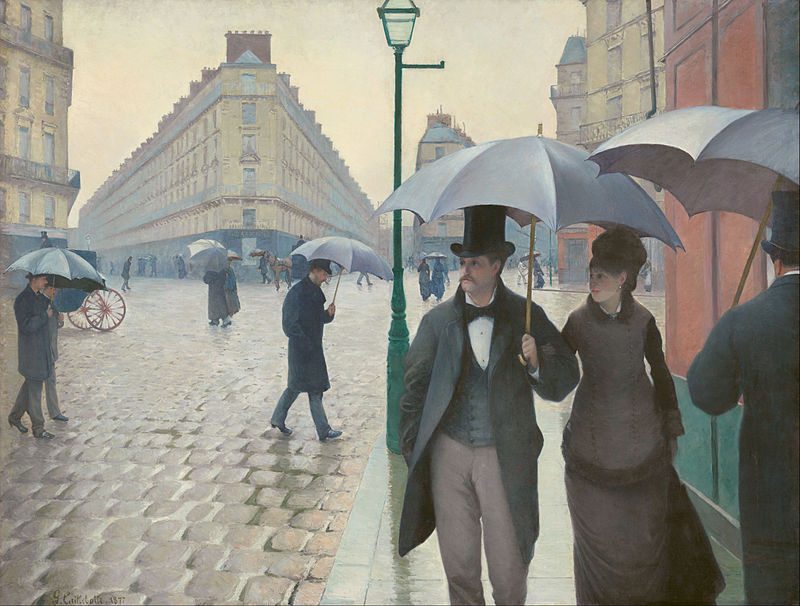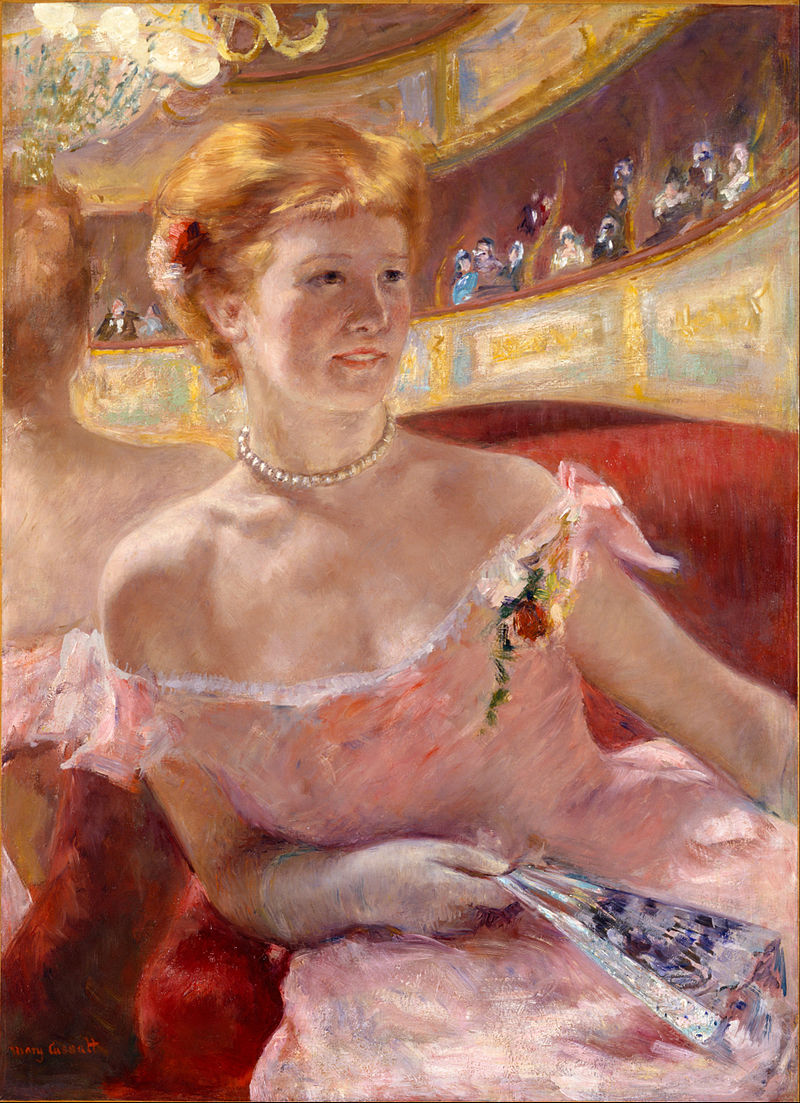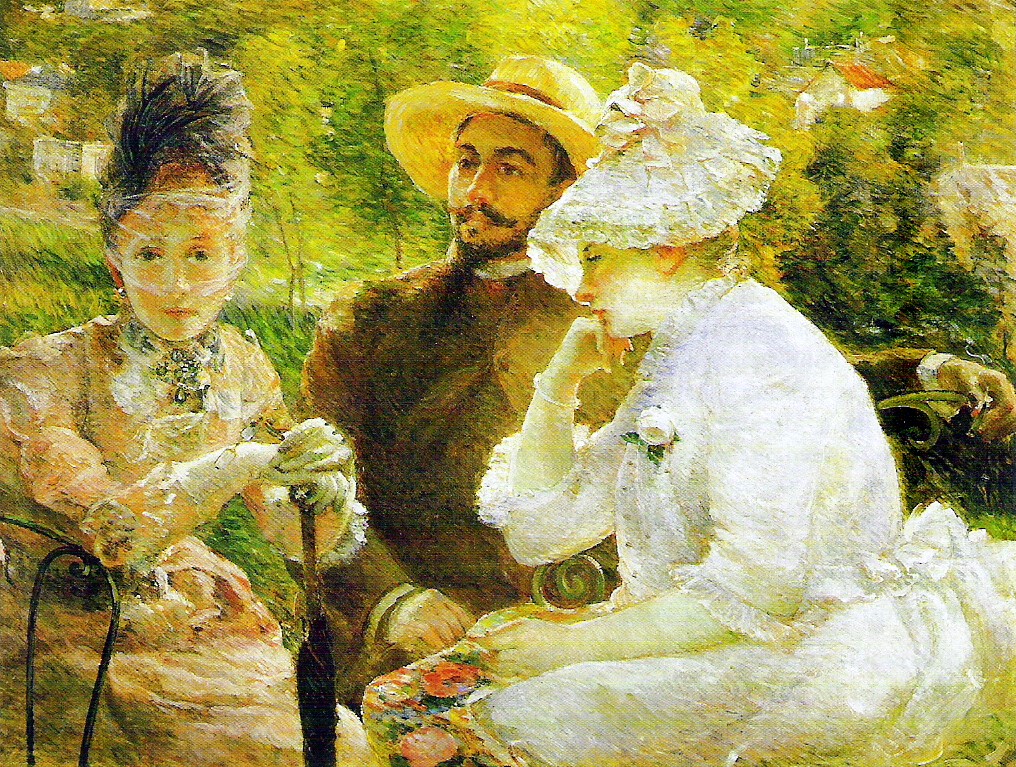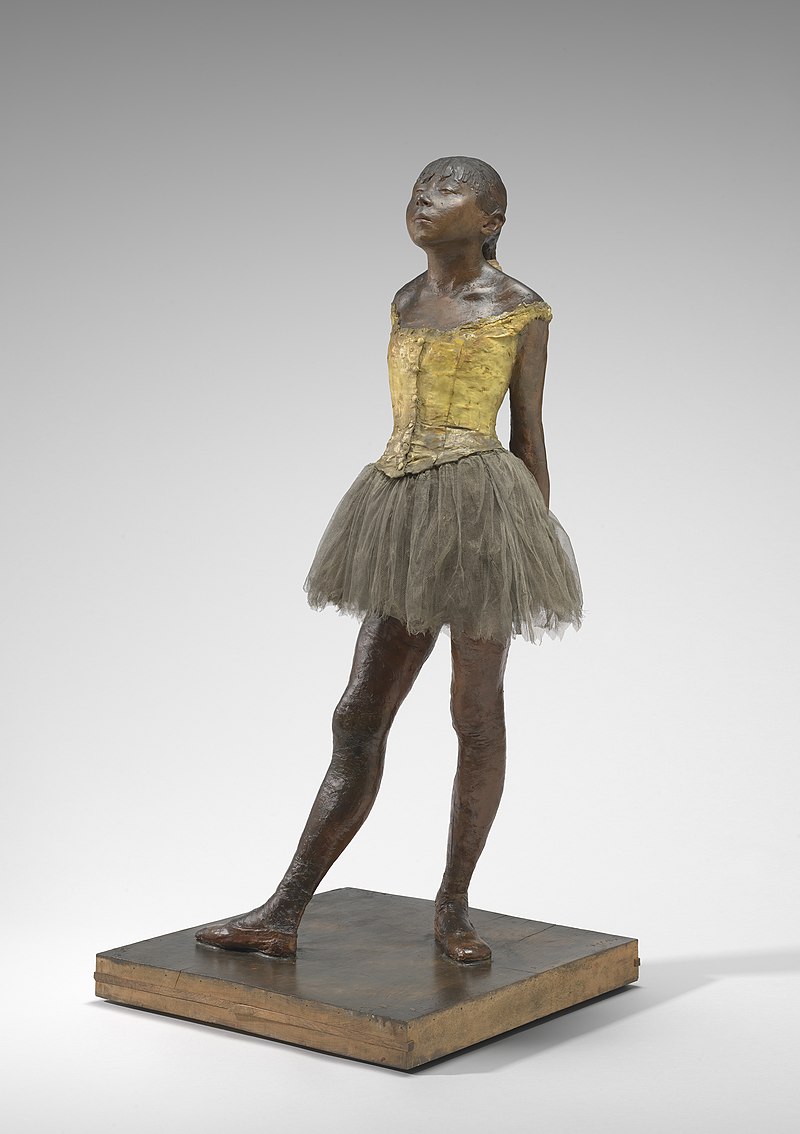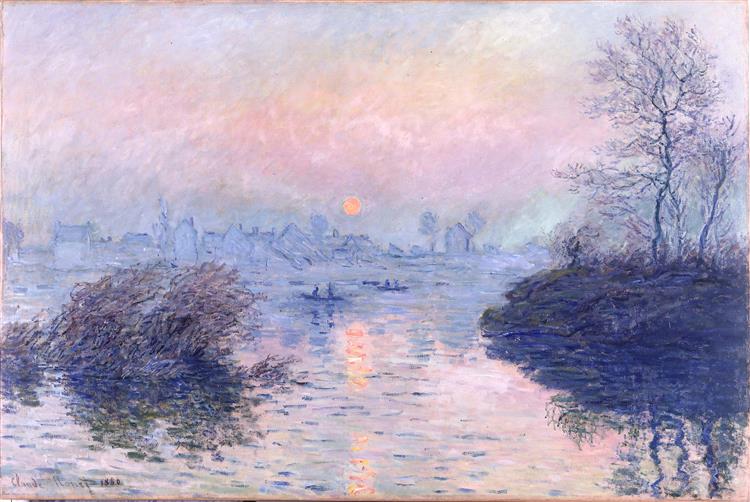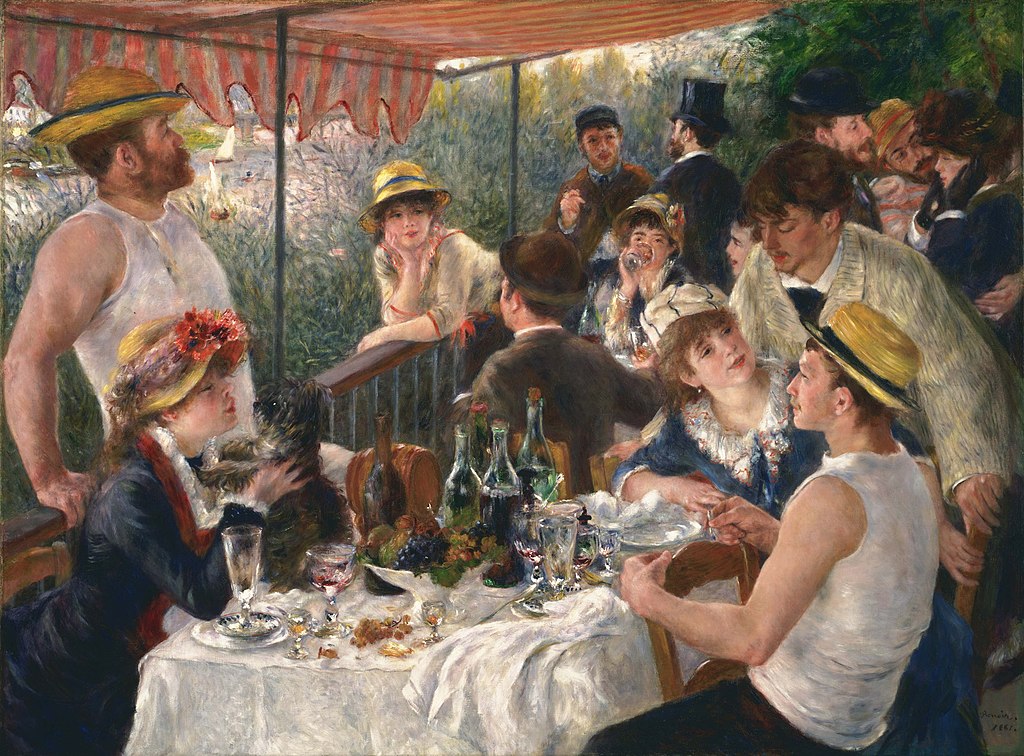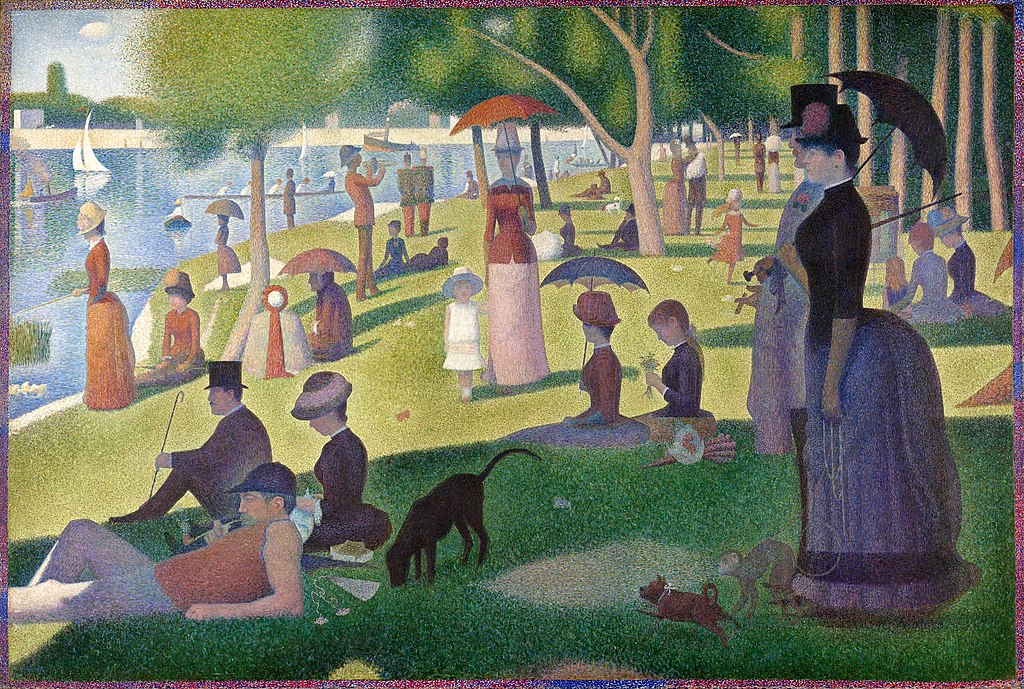The Eight Impressionist Exhibitions
|
Above: Monet's contribution to the Third Exhibition included a series of eight paintings he had done of the St. Lazare railroad station in Paris.
Below: Caillebotte's "Rainy Day in Paris" Two new women artists participated in The Fourth Exhibition. Above: Mary Cassatt's "Lydia at the Opera". Below: Marie Bracquemond's "On the Terrace at Sevres."
A controversial highlight of the Sixth Exhibition was Edgar Degas' sculpture "The Little Dancer Aged Fourteen." The original was made of wax, had human hair and was dressed in a cloth ballet costume.
The Seventh Exhibition saw the return of Monet and Renoir to the Impressionist Exhibitions. Above: Monet's "Sunset on the Seine, Winter Effect." Below: Renoir's "The Luncheon of the Boating Party."
Stealing the show at the Eighth Exhibition were the Post-Impressionist works of Georges Seurat and Paul Signac. In particular Seurat's "A Sunday on the Grande Jatte" drew the crowd's attention and comment.
|
Artist appreciation - The Eight Impressionist Exhibitions - page two
